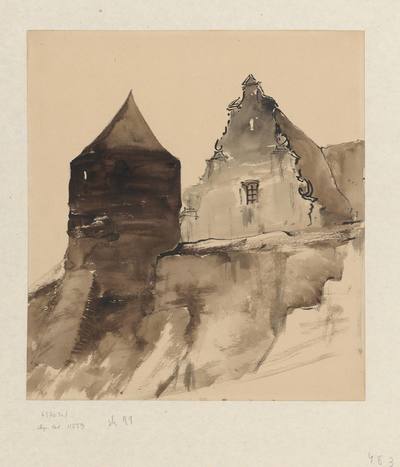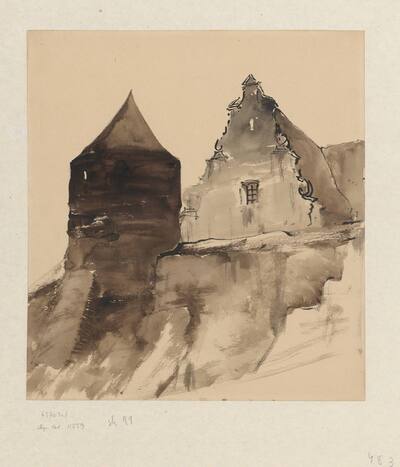- Tytuł:
-
Is the suburbanisation stage always important in the transformation of large urban agglomerations? The case of the
Katowice Conurbation ; Geographia Polonica Vol. 90 No. 2 (2017) - Autorzy:
- Temat:
-
suburbanisation
urban agglomeration
postindustrial region
urban polycentrism
Central-Eastern Europe
suburbanizacja
aglomeracjemiejskie
region postindustrialny
policentryczne systemymiejskie
Europa Środkowo-Wschodnia - Źródło:
- CBGiOS. IGiPZ PAN, call nos.: Cz.2085, Cz.2173, Cz.2406 ; http://195.187.71.2/ipac20/ipac.jsp?profile=geogpan&index=BOCLC&term=ee95400564 ; CBGiOS. IGiPZ PAN, sygn.: Cz.2085, Cz.2173, Cz.2406
- Opis pliku:
- File size 2,9 MB; application/pdf; Rozmiar pliku 2,9 MB
- Relacje:
-
Geographia Polonica; 1. Bajmocy P., 2012. Suburbanisation and suburban regions in Hungary after 1990 [in:] T. Csapó, A. Balogh (eds.), Development of the settlement network in the Central European countries: Past, present, and future, Berlin, Heidelberg: SpringerVerlag, pp. 207-221.; 2. Blotevogell H.H., Schickhoff I., 1986. Suburbanisation in densely populated areas with several foci: The example of the Rhine-Ruhr industrial area [in:] G. Heinritz, E. Lichtenberger (eds.), The take-off of suburbia and the crisis of the inner city: Proceedings of the International Symposium in Munich and Vienna 1984, Stuttgart: Franz Steiner Verlag, pp. 74-98.; 3. Brade I., Smigel
C ., Kovács Z., 2009. Suburban residential development in post-socialist urban regions: The case of Moscow, Sofia, and Budapest [in:] H. Kilper (ed.), New disparities in spatia development in Europe, Berlin, Heidelberg: Springer-Verlag, pp. 79-104.; 4. Cirtautas M., 2013. Urban sprawl of major cities in the Baltic states. Scientific Journal of Riga Technical University, ser.10, Architecture and Urban Planning, pp. 72-79.; 5. CouchC ., Leontidou L., Petschel-Held G. (eds.), 2007. Urban sprawl in Europe. Landscapes: Land-use change and policy. Oxford: Blackwell Publishing.; 6. CSO, 1990. Statistical Yearbook of Poland, 1990. Number of vehicles in Poland, 1989. Warsaw: Central Statistical Office.; 7. CSO, 2014. Population Projection 2014-2050. Warsaw: Central Statistical Office.; 8. CSO, 2015. Statistical Yearbook of Poland, 2015. Number of vehicles in Poland, 2014. Warsaw: Central Statistical Office.; 9. Dostál P., Hampl M., 2008. Development of national settlement systems in the industrial and post-industrial areas: A general discussion and the case of the Czech Republic [in:] W. Strubelt, G. Gorzelak (eds.), City and Regions: Papers in honour of Jiří Musil, Leverkusen Opladen: Budrich Uni Press, pp. 43-54.; 11. Gans P., 2000. Urban population change in large cities in Germany, 1980-94. Urban Studies, vol. 37, no. 9, pp. 1497-1512.; https://doi.org/10.1080/00420980020080231 -; 12. Haase A., Bernt M., Grossman K., Mykhnenko V., 2013. Varieties of shrinkage in European cities. European Urban and Regional Studies, vol. 23, no. 1, pp 86-102.; https://doi.org/10.1177/0969776413481985 -; 13. Hänsgen D., Lenz S., Tzschaschel S., 2010. Deutschlandatlas: Unser Land in 200 thematischen Karten. Darmstadt: WBG.; 14. Hoekveld J.J., 2015. Spatial differentiation of population development in a declining region: The case of Saarland. Geografiska Annaler: Series B. Human Geography, vol. 97, no. 1, pp. 47-68.; https://doi.org/10.1111/geob.12065 -; 15. Kabisch N., Haase D., 2011. Diversifying European agglomerations: Evidence of urban population trends for the 21st century. Population, Space and Place, vol. 17, no. 3, pp. 236-253.; https://doi.org/10.1002/psp.600 -; 16. Kabisch N., Haase D., Haase A., 2012. Urban population development in Europe, 1991-2008: The examples of Poland and the UK. International Journal of Urban and Regional Research, vol. 36, no. 6, pp. 1326-1348.; https://doi.org/10.1111/j.1468-2427.2012.01114.x -; 17. Kantor-Pietraga I., 2014. Systematyka procesu depopulacji miast na obszarze Polski od XIX do XXI wieku.Katowice : Wydawnictwo Uniwersytetu Śląskiego.; 18. Klaassen L.H., Palinck J.H.P., 1979. The future of large towns. Environment and Planning A, vol. 11, no. 10, pp. 1095-1104.; https://doi.org/10.1068/a111095 -; 19. Kok H., 1999. Migration from the city to the countryside in Hungary and Poland. GeoJournal, vol. 49, no. 1, pp. 53-62.; 20. Korcelli P., 1972. Urban spatial growth. A wavelike approach. Geographia Polonica, vol. 24, pp. 45-55.; 21. Krišjane Z., Berzinš M., 2012. Post-socialist urban trends: New patterns and motivations for migration in the suburban areas of Rīga, Latvia. Urban Studies, vol. 49, no. 2, pp. 289-306.; https://doi.org/10.1177/0042098011402232 -; 22. Krzysztofik R., Runge J., Kantor-Pietraga I., 2011. Paths of shrinkage in theKatowice Conurbation. Case studies of Bytom and Sosnowiec cities. Sosnowiec: Wydział Nauk o Ziemi Uniwersytetu Śląskiego.; 23. Leetmaa K., Tammaru T., 2007. Suburbanization in countries in transition: Destinations of suburbanizers in the Tallinn metropolitan area. Geografiska Annaler: Series B. Human Geography, vol. 89, no. 2, pp. 127-146.; https://doi.org/10.1111/j.1468-0467.2007.00244.x -; 24. Lisowski A., Mantey D., Wilk W., 2014. Lessons From Warsaw: The lack of coordinated planning and its impact on urban sprawl [in:] K. Stanilov, L. Sýkora (eds.), Confronting suburbanization: Urban decentralization in postsocialist Central and Eastern Europe. Chichester: John Wiley & Sons, pp. 225-255.; 25. Lorens P., 2005. Suburbanizacja w procesie rozwoju miasta postsocjalistycznego [in:] P. Lorens (ed.), Problem suburbanizacji, Biblioteka Urbanisty, 7, Warszawa: Urbanista, pp. 33-44.; 26. Maik W. (ed.), 2009. Aglomeracjemiejskie w Polsce na przełomie XX i XXI wieku. Problemy rozwoju, przekształceń strukturalnych i funkcjonowania. Bydgoszcz: Wydawnictwo Uczelniane Wyższej Szkoły Gospodarki.; 27. Marcińczak S., 2012. The evolution of spatial patterns of residential segregation in Central European Cities: The Łódź Functional Urban Region from mature socialism to mature post-socialism. Cities, vol. 29, no. 5, pp. 300-309.; https://doi.org/10.1016/j.cities.2011.08.008 -; 28. Martinez-FernandezC ., Audirac I., Fol S., Cunningham-Sabot E., 2012. Shrinking Cities: Urban Challenges of Globalization. International Journal of Urban and Regional Research, vol. 36, no. 2, pp. 213-225.; https://doi.org/10.1111/j.1468-2427.2011.01092.x -; 29. Musil J., 1993. Changing urban systems in postcommunist societies in Central Europe: Analysis and prediction, Urban Studies, vol. 30, no. 6, pp. 899-905.; https://doi.org/10.1080/00420989320080841 -; 30. Mykhnenko V., Turok I., 2008. East European cities – Patterns of growth and decline, 1960-2005. International Planning Studies, vol. 13, no. 4, pp. 311-342.; https://doi.org/10.1080/13563470802518958 -; 31. Nicolaides B.M., Wiese A. (eds.), 2006. The suburb reader. New York, Abingdon: Routledge.; 32. Nuissl H., Rink D., 2005. The "production" of urban sprawl in eastern Germany as a phenomenon of post-socialist transformation. Cities, vol. 22, no. 2, pp. 123-134.; https://doi.org/10.1016/j.cities.2005.01.002 -; 33. Ouřeniček M., 2007. Differential suburban development in the Prague Urban Region. Geografiska Annaler: Series B. Human Geography, vol. 89, no. 2, pp. 111-126.; https://doi.org/10.1111/j.1468-0467.2007.00243.x -; 34. Parysek J.J., 2005. Miasta polskie na przełomie XX i XXI wieku. Rozwój i przekształcenia strukturalne. Poznań: Bogucki Wydawnictwo Naukowe.; 35. Phelps N.A., Wu F. (eds.), 2011. International perspectives on suburbanization: A post-suburban World? Basingstoke, New York: Palgrave Macmillan.; 36. Pichler-Milanovič N., Gutry-Korycka M., RINK D., 2007. Sprawl in the post-socialist city: The changing economic and institutional context of Central and Eastern European cities [in:]C . Couch, L. Leontidou, G. Petschel-Held (eds.), Urban sprawl in Europe. Landscapes, Land-Use Change & Policy, Oxford: Blackwell Publishing, pp. 102-135.; 37. Ravetz J., FertnerC ., Nielsen T.S., 2013. The dynamics of peri-urbanization [in:] K. Nilsson, S. Pauleit, S. Bell,C . Aalbers, T.S. Nielsen (eds.), Peri-urban futures: Scenarios and models for land use change in Europe. Berlin, Heidelberg: SpringerVerlag, pp. 13-44.; https://doi.org/10.1007/978-3-642-30529-0_2 -; 38. Roose A., Kull A., Gauk M., Tali T., 2013. Land use policy shocks in the post-communist urban fringe: A case study of Estonia. Land Use Policy, vol. 30, no. 1, pp. 76-83.; https://doi.org/10.1016/j.landusepol.2012.02.008 -; 39. Rubiera Morollón F., Gonzáles Marroquin V.M., Pérez Rivero J.L., 2016. Urban sprawl in Spain: differences among cities and causes. European Planning Studies, vol. 24, no. 1, pp. 207-226.; https://doi.org/10.1080/09654313.2015.1080230 -; 40. Rumpel P., Slach O., 2012. Je Ostrava "smršťujícím se městem"? Sociologický časopis, vol. 48, no. 5, pp. 859-878.; 41. Runge J., Krzysztofik R., Kantor-Pietraga I., Spórna T., 2011, Characteristic Features of Urbanization in the Area of Silesian Province (Poland) at the Beginning of 21st Century, Romanian Sociology (Sociologie Românească), vol. 9, no. 3, pp. 56-66.; 42. Runge J., Kantor-Pietraga I., Krzysztofik R., Runge A., 2014. Model urbanizacji złożonych układów osadniczych w świetle procesu kurczenia się miast w Polsce – próba analizy krytycznej [in:] T. Stryjakiewicz (ed.), Kurczenie się miast w Europie Środkowo-Wschodniej, Poznań: Bogucki Wydawnictwo Naukowe, pp. 115-125.; 43. Sailer-Fliege U., 1999. Characteristics of postsocialist urban transformation in East Central Europe. GeoJournal, vol. 49, no. 1, pp. 7-16.; https://doi.org/10.1023/A:1006905405818 -; 44. Salvati L., Carlucci M., 2014. In-between stability and subtle changes: Urban growth, population structure, and the city life cycle in Rome. Population, Space and Place, Early View.; 45. Schmidt S., 2011. Sprawl without growth in Eastern Germany. Urban Geography, vol. 32, no. 1, pp. 105-128.; https://doi.org/10.2747/0272-3638.32.1.105 -; 46. Schmidt S., Fina S., Ssiedentop S., 2015. Post-socialist sprawl: A cross-country comparison. European Planning Studies, vol. 23, no. 7, pp. 1357-1380.; https://doi.org/10.1080/09654313.2014.933178 -; 47. Scott A.J., 2001. Globalization and the rise of cityregions. European Planning Studies, vol. 9, no. 7, pp. 813-826.; https://doi.org/10.1080/09654310120079788 -; 48. Śleszyński P., 2006. Demograficzny wymiar procesów suburbanizacji w Polsce po 1989 roku [in:] S. Kozłowski (ed.), Żywiołowe rozprzestrzenianie się miast: Narastający problem aglomeracji miejskich w Polsce. Studia nad zrównoważonym rozwojem, vol. 2, Białystok-Lublin-Warszawa: Wydział Ekonomia i Środowisko, pp. 105-123.; 49. Sokołowski D., 2006. Funkcje centralne i hierarchia funkcjonalna miast w Polsce. Toruń: Wydawnictwo Uniwersytetu Mikołaja Kopernika.; 50. Stanilov K., Sýkora L. (eds.), 2014, Confronting suburbanization: Urban decentralization in postsocialist Central and Eastern Europe. Chichester: Wiley-Blackwell.; 51. Steinführer A., Haase A., 2007. Demographic change as future challenge for cities in East Central Europe. Geografiska Annaler: Series B. Human Geography, vol. 89, no. 2, pp. 183-195.; https://doi.org/10.1111/j.1468-0467.2007.00247.x -; 52. Stiftung Demographischer Wegweiser, 2006. Wegweiser Demographischer Wandel 2020. Analysen und Handlungkonzepte für Städte und Gemeinden. Bielefeld: Bertelsmann Stiftung Verlag.; 53. Sýkora L., Bouzarovski S., 2012. Multiple transformations: Conceptualising the post-communist urban transition. Urban Studies, vol. 49, no. 1, pp. 43-60.; https://doi.org/10.1177/0042098010397402 -; 54. Sýkora L., Ouřeniček M., 2007. Sprawling post-communist metropolis: Commercial and residential suburbanization in Prague and Brno, the Czech Republic [in:] E. Razin, M. Dijst,C . Vázquez (eds.), Employment deconcentration in European Metropolitan Areas: Market forces versus planning regulations, Dordrecht: Springer, pp. 209-233.; 55. Szirmai V., 2012. Urban sprawl in Europe. Regional Statistics, no. 01, pp. 129-148.; 56. Turok I., Mykhnenko V., 2007. The trajectories of European cities, 1960-2005. Cities, vol. 24, no. 3, pp. 165-182.; https://doi.org/10.1016/j.cities.2007.01.007 -; 57. van den Berg L., Drewett R., Klaassen L.H., Rossi A., VijwerbergC .H.T., 1982. Urban Europe: A study of growth and decline. Oxford: Pergamon Press.; 58. Ye L., Wu A.M., 2014. Urbanization, land development, and land financing: Evidence from Chinese cities. Journal of Urban Affairs, vol. 36, no. 1, pp. 354-368.; ttps://doi.org/10.1111/juaf.12105 -; 59. Zborowski A., Soja M., Łobodzińska A., 2012. Population trends in Polish cities – stagnation, depopulation or shrinkage? Prace Geograficzne,vol. 130, Kraków: Instytut Geografii i Gospodarki Przestrzennej UJ, pp. 7-28.; oai:rcin.org.pl:publication:82073; https://rcin.org.pl/dlibra/publication/edition/62494/content; oai:rcin.org.pl:62494 - Dostępność:
-
https://doi.org/10.1080/00420980020080231
https://doi.org/10.1177/0969776413481985
https://doi.org/10.1111/geob.12065
https://doi.org/10.1002/psp.600
https://doi.org/10.1111/j.1468-2427.2012.01114.x
https://doi.org/10.1068/a111095
https://doi.org/10.1177/0042098011402232
https://doi.org/10.1111/j.1468-0467.2007.00244.x
https://doi.org/10.1016/j.cities.2011.08.008
https://doi.org/10.1111/j.1468-2427.2011.01092.x
Czasopismo naukowe




